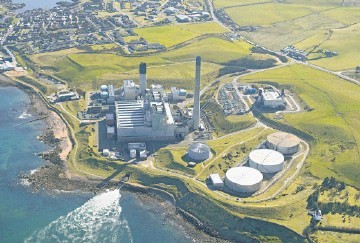
Yesterday’s news regarding the withdrawal of the £1 billion capital subsidy by a government who only six months ago were firmly committed to CCS as part of their election manifesto was a shock for many people across the energy industry.
It was not announced as part of the 2015 spending review, but was part of the collateral damage of budget cuts at DECC which was quietly announced to the UK Stock Exchange at 3pm through a short statement of 56 words – equivalent to just three tweets.
“Today, following the Chancellor’s Autumn Statement, HM Government confirms that the £1 billion ring-fenced capital budget for the Carbon Capture and Storage (CCS) Competition is no longer available.
“This decision means that the CCS Competition cannot proceed on its current basis. We will engage closely with the bidders on the implications of this decision for them.”
Almost exactly four years ago, the UK’s first CCS competition was also brought to an abrupt end by a government decision under the same prime minister. So, is this just another setback on the rocky road for CCS or a signal that CCS is now finished before it started in the UK?
Had the competition run to its conclusion then one or both of the competing projects at Peterhead and White Rose would have been able to access a share of the £1 billion ring fenced capital subsidy from the middle of 2016.
Both projects had been specifically designed with this capital subsidy in mind, but both projects would also have benefited from operational support through a Contract for Difference (CfD) similar to that used in the renewables sector when the plants delivered clean low carbon power to the grid.
Yesterday’s statement confirmed that the £1 billion capital subsidy was no longer available, but it is our understanding that the Contract for Difference, which Pale Blue Dot Energy estimates to be worth significantly more to the project sponsors than the capital subsidy, still remains.
Whilst it is too early to say how the projects will respond, a Shell spokesperson has already commented that “We no longer see a future for the Peterhead project in the near term.”
The White Rose consortium has said: “It is difficult to imagine its continuation in the absence of crucial Government support”. The Drax decision just two months ago, to exit from the White Rose consortium because of “a drastically different financial and regulatory environment” now looks prophetic. These two projects have invested an estimated £80m in front end engineering design (FEED) and have been engaged in the Competition for over 3½ years.
So is CCS in the UK dead? – Whilst many in the sector were assuming that both projects would be progressed, many of those with longer memories have been concerned for some time (UK CCS Project Development Snapshot: November 2014). Now there is a sense of deja-vu.
Realistically, it will now take several months at least for the fog on the future of CCS to lift.
Back in 2011, DECC used a Knowledge Transfer conference after the Longannet CCS Project was cancelled as a successful strategy to engage industry in a second CCS competition. Whilst such KT is a key product from the investment of an estimated £80m of public funds in FEED, the approach this time will be different.
There have been serious large scale CCS projects proposed in the UK within the past four years that have been confident enough to make offers to UK Government to build new plant without a capital subsidy as long as a viable CfD was in place, reflecting a similar structure to that agreed for Hinkley Point Nuclear Power plant.
So if both Peterhead and White Rose pulled out (and we have found nobody yet who thinks they might stay in) then there may be CfD pool available for projects that can negotiate successfully on this “nuclear option”.
A separate matter of course is whether any corporate group or financial institution will now realistically trust UK Energy Policy on CfD availability given how many times we have all been up and down the this particular garden path.
This “lack of trust” is undoubtedly CCS’s biggest challenge in the UK now, but it also extends to the renewables sector, coal and even gas. Who now is going to build the gas fired plant we will all need to keep the lights on?
The cancellation also casts a shadow on the industry’s long sung favourite strategy of “cluster development” where simplistic economic analysis shows that significant cost reduction for “follow on” projects can result from using shared infrastructure.
Now we experience the downside of that strategy as many follow on projects also fall by the wayside because they were designed to be dependent upon either Peterhead or White Rose infrastructure.
However with CCS being what it is, some projects have recognised this risk and continued to retain independent options and will be able to continue to move forwards.
The CCS story in the UK is a clear example of a market failure.
The practical solution is to establish a National CCS Company which has powers to invest in the growing number of stranded power assets in the UK and convert them into viable low carbon generation plant using the knowledge developed from six publically funded excellent but ultimately unsuccessful FEED projects.
This will halve the cost of decarbonising the UK economy and maintain the momentum we have all paid to develop.
This company could be privatised in the mid 2020s returning a healthy premium on investment back to the public purse. Whilst this option currently seems a million miles away, CCS is just as important in the fight against climate change today as it was yesterday.
Sam Gomersall is commercial director at Pale Blue Dot, an energy transition management consultancy based in Aberdeen
